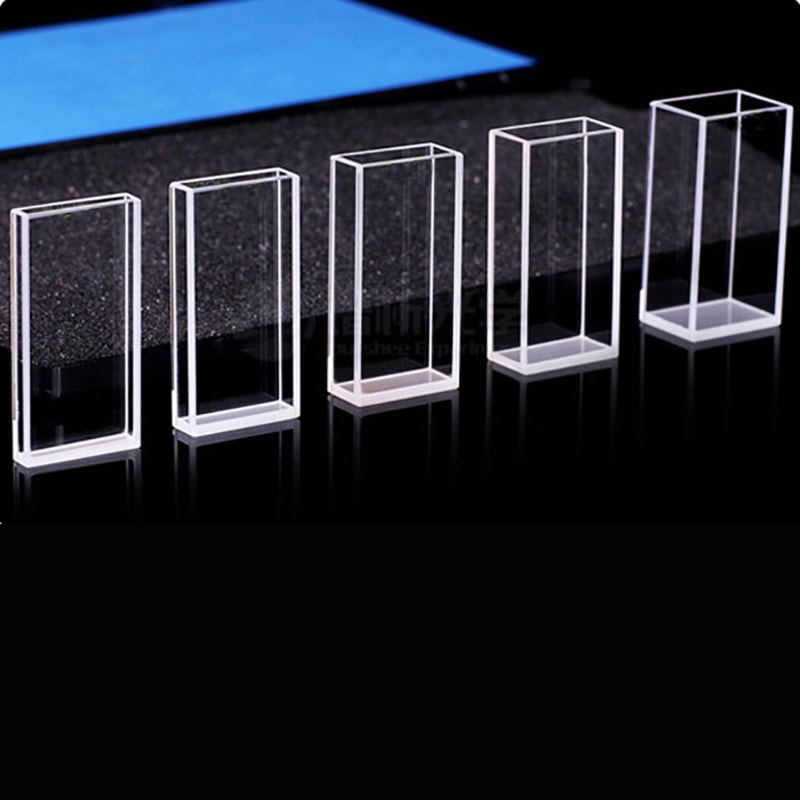Spectrophotometry that reveals the secret of light transmittance and absorption in particular wavelengths, is an essential method of discovery in science. Cuvettes are the vessels at the heart of the process, and houses the samples that are to be studied. The tiny containers may appear basic, but their intricate details, from cuvette length to the material selection can be the key to obtaining accurate results on substance concentration and purity. Let’s explore the fascinating world of the dimensions and cuvette size affect the outcomes of every experiment.
The Power of Cuvette Path Length
Imagine that a beam is passing through an object. The result will depend on the length of the path that is taken by the cuvette. This is the amount of light travels within the liquid. Many labs use standard cuvettes with one centimeter of path. This is the best compromise between practicality and sensitivity. Why is this important? The longer the pathway, the more light gets absorption which amplifies the signal for dilute samples. When it comes to concentrated solutions, such as protein or nucleic acids, a short pathway length could alter the way you play. It reduces the need for dilution, preserving valuable samples, and cutting down the time needed to prepare. What’s the key takeaway from this? The art of matching path length to sample requirements is subtle and enhances the reliability.

Image credit: cuvet.co
Cuvette Dimensions: A Look at More Than What Meets the eye
It’s not just about the amount of liquid that can fit in the vessel, it’s as well about how the vessel works with the spectrophotometer. They come in different volumes and shapes to meet specific applications. Semi-micro cuvettes are an example have smaller dimensions and thicker wall thicknesses, are specifically designed to hold small amounts of sample. Think of a few nanoliters or a rare biological extraction. The thicker walls limit the amount of space within that allows light to pass without wasting any drops. Comparing this to a cuvette standard, the difference is striking the reduction in pipetting steps more accuracy, less mistakes, and results which hold up. This clever trick proves the size isn’t just a number but a strategy.
The 1 cm Path Length Cuvette The 1 cm Path Length Cuvette is a lab favorite
What is it that makes the cuvette with a 1 cm path length being used in a lot of research? This is the best place for biological experiments where every milliliter counts. This traditional design provides constant absorbance readings that don’t overwhelm the detector, making it ideal for everything from DNA quality checks to enzyme assays. This isn’t the model that is universally applicable. If you switch it out for a cuvette that has distinct geometry or length, such as one for studies on emission and the results may be wildly distorted. It is important to choose the correct tool and not the one you are most comfortable with. A wrongly matched instrument is similar to a cuvette not properly matched.
Materials Matters: More Than Size and Path
Cuvette dimensions tell only half the story material choice seals the deal. Glass and quartz cuvettes shine because of their high transmission rates, letting light zip through without interference. They’re durable, reuseable and suitable for demanding tasks in spectroscopy. Cuvettes made of plastic are affordable and easy to use. They don’t require cleaning, there’s no cross-contamination. Just take them out and throw away. For aqueous solutions or quick DNA and RNA tests they’re hard to beat. The cost? Lower accuracy at certain wavelengths. It’s a classic instance of objectively dictating the preference for quartz for the purists and plastic for the pragmatist.
Accuracy in Practice
Cuvettes’ appeal lies in their ability to adapt. With spacers, shorter paths can be utilized to manage concentrated sample. The larger vessels are designed for larger quantities. The quality of the results are affected by the length of the path, the size and the material utilized. Take a look at a lab measuring a protein. A semimicro cuvette is an easier path that removes the need for dilution and produces reliable data more quickly. Compare this to a negligent change of cuvettes in middle of an experiment and you’ll see numbers fall. The smallest details have the biggest impact in spectrophotometry.
Cuvettes aren’t huge, yet they are a major part of. Cuvettes come in various sizes starting from the cuvette with one centimeter length to ones that are custom made. They are able to bridge the gap between the sample and the insight. If you’re seeking pureness or concentration with the proper cuvette, it can transform an accurate measurement into a superior one proof that precision in science starts with the tools at hand.

